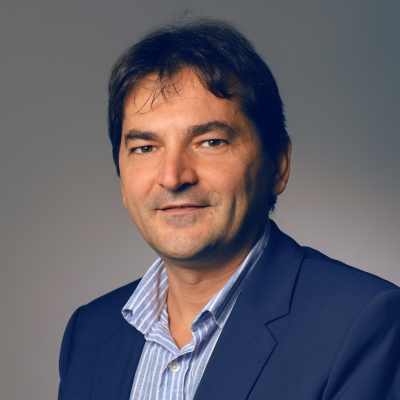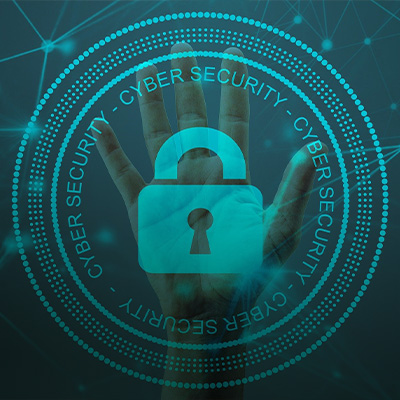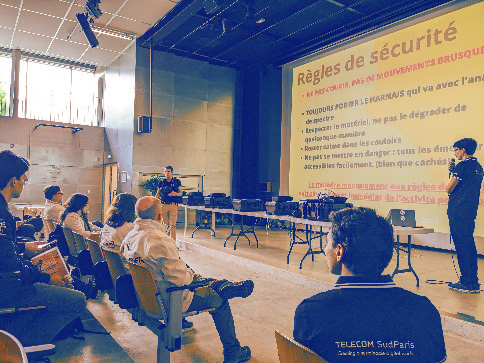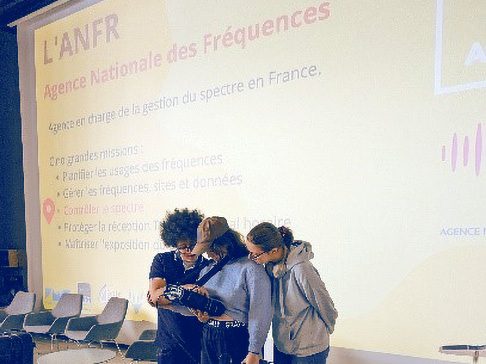Cybermois: the month dedicated to cybersecurity
Publié le October 18 2024Cybermois is the French version of European Cybersecurity Month (ECSM), an awareness-raising event held each October by ENISA, the European Union Agency for Cybersecurity. In France, this event is coordinated by ANSSI.
The eleventh edition of Cybermois focuses on “The Risks of Social Engineering”. Find out how Telecom SudParis has become a major player in France’s digital sovereignty through the expertise of its faculty members, its academic programs and its cybersecurity research.
Telecom SudParis, a key player in digital sovereignty in France
Sharing and developing best practices in cybersecurity
While the digital transition brings innovation and growth, it also entails risks for businesses and citizens with the emergence of new flaws and vulnerabilities.
These have been increasingly exploited since the global health crisis, as Hervé Debar, Dean for Research and Doctoral Studies at Telecom SudParis, explains in the article “Governments, banks, and hospitals: all victims of cyber-attacks“. Digital blackmail, webcam blackmail, ransomware… How to identify and counter everyday threats
During Cybermois, several public bodies and associations, including Telecom SudParis, are working together to offer educational tools to raise awareness of digital security issues among our friends, family and colleagues.
What are the best practices we can follow all year round to protect our connected “selves”?
Security research at Telecom SudParis
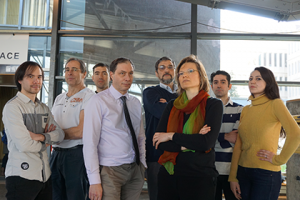 Telecom SudParis is one of France’s leading higher education institutions in the field of digital security. This is made possible by our research faculty as well as the various short and long academic programs on offer. As a Carnot-certified institution and component of Carnot Télécom et Société Numérique Institute, Telecom SudParis is investing substantial resources in a research platform for its researchers and engineers in cybersecurity, data protection and biometrics.
Telecom SudParis is one of France’s leading higher education institutions in the field of digital security. This is made possible by our research faculty as well as the various short and long academic programs on offer. As a Carnot-certified institution and component of Carnot Télécom et Société Numérique Institute, Telecom SudParis is investing substantial resources in a research platform for its researchers and engineers in cybersecurity, data protection and biometrics.
Hervé Debar, a member of the ANSSI Scientific Advisory Board and Dean for Research and Doctoral Studies at Telecom SudParis, explains, “Our cybersecurity platform provides a vital, risk-free physical base for us to experiment, to keep a record of our research, and to offer solutions that we can’t necessarily implement today”.
⇒ Find out more about research into security at Telecom SudParis
Introducing VARioT: cybersecurity for connected objects
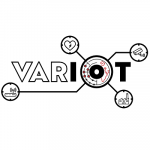
Telecom SudParis plays an active role in the research and development of cybersecurity technologies and pays special attention to IoT security through the European collaborative research project VARioT (Vulnerability and Attack Repository for IoT).
Grégory Blanc, a faculty member at Telecom SudParis and associate professor in Cybersecurity and Networks, was one of the architects of this project. ⇒ Find out more
Télécom SudParis accompagne la stratégie nationale cyber en co-pilotant SuperviZ

Launched on June 21, 2022, the Cybersecurity Priority Research Program and Equipment (PEPR)[FR] seeks to boost the excellence of French research and support growth in the cybersecurity sector. Funded as part of PIA 4 (now France Relance), it presents seven initial targeted research projects, including SuperViz, co-piloted by Telecom SudParis and funded to the tune of €1.6 million.
The SuperviZ project is part of the “systems security” objective of the cybersecurity PEPR, covering the field of “systems, software and network security”. More specifically, it targets the detection, response and remediation of computer attacks, which are classified under “security supervision”. The supervision aims to reinforce preventive protection mechanisms and compensate for their shortcomings.
⇒ Find out more about the project here (FR)
Discover our platform for the cybersecurity of connected objects
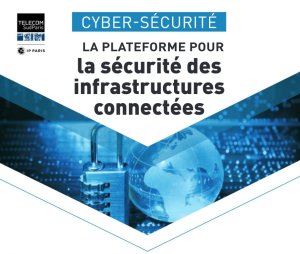
→ Design and evaluation of security mechanisms
→ Reproduction of “real” attacks and deployment of countermeasures
→ Experimentation with various case studies: THD, 5G, IoT, SCADA.
The Cyber CNI Chair in Cybersecurity for Critical Infrastructure
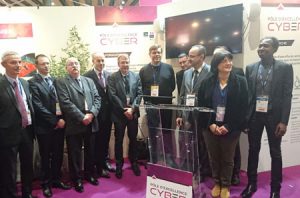
The research chair seeks to contribute to the international development of research and academic activities in a field that has become a national priority: cybersecurity for critical infrastructure.
Led by IMT Atlantique, in collaboration with Telecom Paris and Telecom SudParis, and in partnership with Fondation Mines-Télécom, this chair is supported by eight partners and the Brittany regional government. ⇒ more info
Values and Policies of Personal Information

Co-founded by Maryline Laurent, full professor at Telecom SudParis and director of the RST department, this research chair contributes to thinking on the legal, ethical, economic and technical regulation of personal information. It suggests trust policies to public and private organizations for their users and customers.
Led by a multidisciplinary team from several IMT schools, in partnership with Fondation Mines-Télécom, it is supported by BNP Paribas, Groupe Imprimerie Nationale, Orange, LVMH, Dassault Systèmes, Deveryware and works in partnership with CNIL.
CYBERSECURITY TRAINING AT TELECOM SUDPARIS
Advanced Masters: Cybersecurity
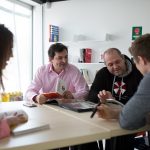
The European NIS 2 (Network and Information Systems) directive came into force on January 17, 2023. It strengthens the level and obligations of cybersecurity throughout the European Union.
The scope of organizations covered by the directive has been expanded: more than 18 sectors are now regulated, which according to ANSSI represents more than 600 different types of entities, from small businesses to France’s biggest companies and administrations of all sizes.
The Advanced Masters in Cybersecurity is aimed at professionals, students and those on work-study programs who are looking for cutting-edge expertise in cybersecurity to meet current and future challenges that will face companies, communities and administrations.
Master 2 in Electronics, Electrical Energy and Automation (E3A)
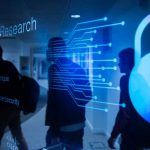 This academic program from Institut Polytechnique de Paris covers eight tracks in the fields of electrical engineering and information technology: cybersecurity, data science, multimedia networks, optical networks and photonic systems, radio systems, virtual and augmented reality.
This academic program from Institut Polytechnique de Paris covers eight tracks in the fields of electrical engineering and information technology: cybersecurity, data science, multimedia networks, optical networks and photonic systems, radio systems, virtual and augmented reality.
The Master in Electronics, Electrical Energy and Automation offers high-level courses supported by six major laboratories at IP Paris and Université Paris-Saclay, with strong links to the sector.
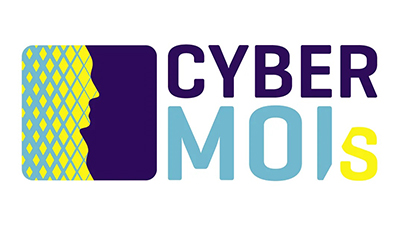
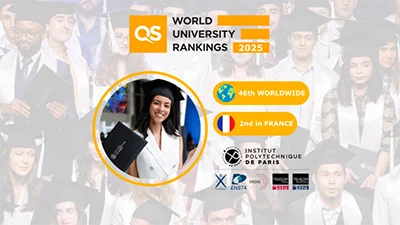
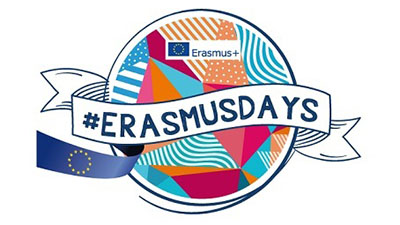

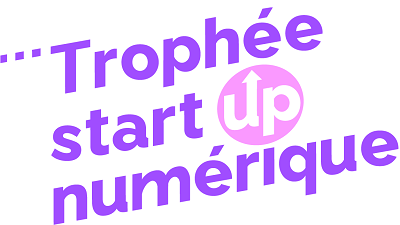

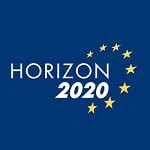
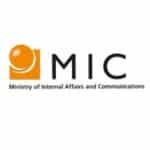
 A virtual assistant provides a variety of services to help users in their daily activities, leisure pursuits or in following their treatment. The system is able to talk to the user via a text or voice conversational agent.
A virtual assistant provides a variety of services to help users in their daily activities, leisure pursuits or in following their treatment. The system is able to talk to the user via a text or voice conversational agent.